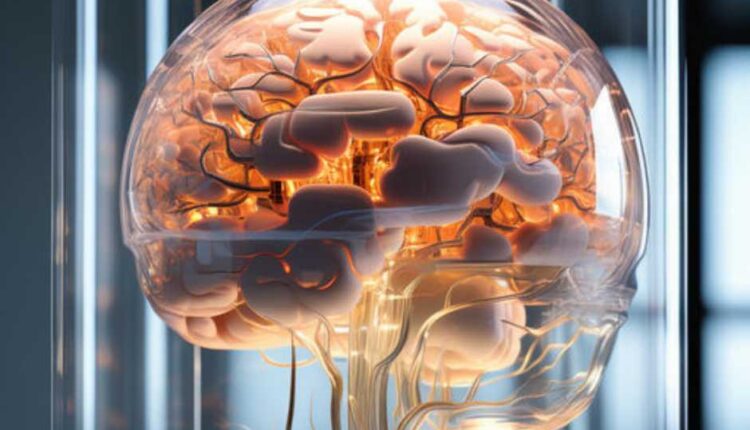What is Lewy Body Dementia? An overview of the disease
Lewy body dementia (LBD) is a progressive brain disorder that causes a decline in thinking, reasoning and independent function over time. It’s the second most common form of dementia following Alzheimer’s disease, yet LBD often goes undiagnosed or misdiagnosed due to its complex symptoms.
LBD develops when abnormal clumps of alpha-synuclein protein form inside brain cells, known as Lewy bodies. These protein clumps damage and ultimately kill nerve cells in brain areas involved with thinking, memory and movement control.
The accumulation of Lewy bodies leads to major disruptions in chemical messengers and circuitry between brain regions. This neuronal damage is responsible for the wide range of cognitive and motor impairments seen in people with LBD.
Symptoms of Lewy Body Dementia
A key characteristic of lewy dementia disease is its variability – symptoms fluctuate daily or even hourly in severity. This makes establishing a clear diagnosis more difficult compared to Alzheimer’s disease. Some common signs and symptoms include:
Cognitive impairment
Problems with attention, planning, visual-spatial skills and vivid visual hallucinations are often early cognitive signs. Memory problems tend to be less severe than in Alzheimer’s at first.
Movement symptoms
Tremors at rest, slow movements, stiffness and difficulty initiating or stopping movements resembling Parkinson’s disease are frequent.
Changes in alertness
Daytime drowsiness, unclear thinking after sleeping and pronounced variations daily can occur. Ranging between periods with intact cognition to times with disordered thinking or delirium.
Behavioral and psychiatric symptoms
These include delusions, anxiety, apathy, and mood changes. Sleep disturbances like insomnia and REM sleep behavior disorder are also very common.
The combination and progression of these symptoms make LBD unique. Most people experience cognitive impairments combined with either movement issues or changes in alertness/behaviors early on.
Diagnosing LBD
Due to the varied presentation of lewy dementia disease, diagnosis relies on a thorough clinical evaluation and exam by a medical expert experienced with dementia. A misdiagnosis of Alzheimer‘s disease is quite possible, especially early on.
Doctor’s assess medical history, conduct mental status and neurological exams checking for motor changes. They may order lab tests like blood tests to rule out other conditions. Imaging tests like MRI, CT or PET scans are not diagnostic but can help rule out other brain diseases or injuries.
The definitive test for LBD is examining brain tissue post-mortem for Lewy bodies. But a diagnosis can be supported during life using established clinical criteria like the McKeith consensus guidelines. This standard involves rating how distinctly features of Parkinson’s, dementia and fluctuations are present. Meeting criteria establishes “probable” or “possible” LBD.
An accurate diagnosis allows personalized treatment planning and guidance for patients and caregivers on disease progression. It provides closure on what may have been months ruling out other possibilities. An early LBD diagnosis also enables participation in clinical studies for new therapies.
Coping and Managing Lewy Body Dementia
Currently, there is no cure for lewy dementia disease and treatments focus on symptom management through medication and non-drug strategies. Due to variability in symptom expression, management requires a tailored approach.
Some effective pharmaceutical options include cholinesterase inhibitors and other medicines approved for Alzheimer’s like memantine. However, medications for movement issues in LBD, such as Parkinson’s drugs levodopa and dopamine agonists, may worsen or trigger hallucinations and confusion.
Non-drug therapies are critical for coping daily. Creating a supportive environment, establishing routines, managing stress, and engaging mentally and physically can help optimize quality of life. Care partners play a huge role by anticipating fluctuations, adapting pace and environment, and keeping activities purposeful.
Exploring non-invasive stimulation methods may offer relief. Repetitive transcranial magnetic stimulation appears promising for persistent visual hallucinations. Deep brain stimulation implants approved for tremor control could aid refractory symptoms in some patients.
Clinical trials are evaluating new pharmacological hopefuls with distinct mechanisms. A deeper mechanistic understanding of LBD’s underlying pathology is driving drug discovery towards disease-modifying treatments instead of symptomatic therapies alone. Advances rely on more participation from the Lewy body dementia community.
Living well with LBD
While LBD remains progressive, people can still lead fulfilling lives even during later stages with help from care support. Research shows maintaining social connections elevates mood and motivation despite challenges.
Staying active mentally and physically when able preserves functioning longer according to studies. Engaging in meaningful activities of interest brings joy to each day no matter one’s abilities. Pet therapy offers calming interaction for some.
Expressive arts like music, dance, and visual arts foster connectivity and release emotion when verbal communication becomes difficult. Reminiscence therapies utilizing memorable objects and photos can rekindle positive memories.
Connecting with others facing LBD through support groups cultivates empowerment and solidarity against stigma. Understanding LBD increases preparedness for events like hospitalization when communication may deteriorate. Advance care planning ensures personal preferences and values continue guiding care when one cannot advocate.
Though the prognosis remains guarded with LBD, each person’s humanity surpasses any diagnosis. With compassionate care and community, individuals with LBD continue enriching lives even to life’s end. Increased awareness brings LBD out of isolation to find hope through connection and purpose despite challenges.
Related Topics
- Managing Anxiety: A Guide to Keep Calm in Anxious Times
-
Healthy Hydration: How Much Water Should I Drink a Day for Optimal Well-being?
- Keratosis Pilaris: Unraveling the Mysteries of “Chicken Skin”
- Low Blood Potassium (Hypokalaemia): Causes, Symptoms, and Treatment
- Intuitive Eating: The Sustainable Path to Weight Management
Cardio FLEX Reviews: Unveiling the Truth about Cardiovascular Health Support
Cortexi Reviews – Unveiling the Power of the Ultimate Nootropic Formula
Gluconite Review – A Comprehensive Analysis of Safety and Effectiveness
Ikaria Lean Belly Juice Reviews – The Ultimate Weight Loss Solution
Java Burn Reviews: A Revolutionary Approach to Boosting Metabolism
Liv Pure Reviews: to Achieve Your Weight Loss Goals
ProDentim Reviews: Solution for Dental and Gum Problems
Puravive Reviews: A Detailed Analysis of Discovering the Essence
Quietum Plus Reviews: Unlocking the Secrets to Optimal Ear Health and Clear Hearing
Sugar Defender Reviews: The Importance of Blood Sugar Management
Sumatra Slim Belly Tonic Reviews: Discover its Power for Healthy Weight Loss


[…] Lewy Body Dementia: A Guide to the Mysterious Disease […]
[…] Lewy Body Dementia: A Guide to the Mysterious Disease […]